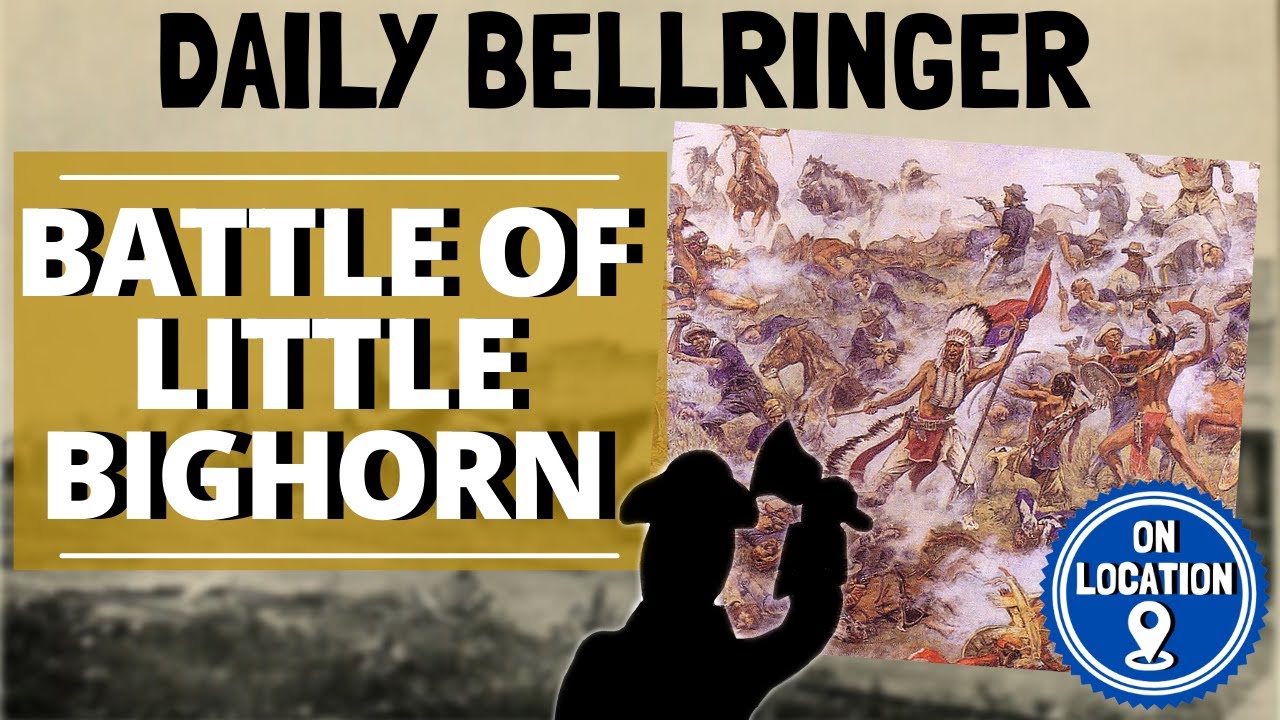Where Sitting Bull and Crazy Horse Defeated Colonel Custer
Summary
TLDRIn the spring of 1876, Chief Sitting Bull of the Lakota Tribe envisioned a great victory over the US Army during a Sundance ceremony. This prophecy marked the beginning of the Battle of Little Bighorn, where General George Armstrong Custer and his 210 men were overwhelmed by a combined force of Lakota, Cheyenne, and Arapaho tribes. Despite Custer’s plan to flank and defeat the native forces, his battalion was decimated, with all soldiers perishing. Although the Native Americans won the battle, they ultimately lost the war as the US government forced them onto reservations.
Takeaways
- 😀 The Battle of Little Big Horn, also known as Custer's Last Stand, took place in the golden hills of Montana, marking one of the most crushing defeats in U.S. military history.
- 😀 Chief Sitting Bull, during a Sundance ceremony in 1876, prophesied a great victory for his Lakota tribe over the U.S. Army, symbolized by American soldiers falling from the sky.
- 😀 The U.S. government sought to move the Lakota and other tribes to reservations, especially after discovering gold in the Black Hills, which led to tensions and war.
- 😀 General Alfred Terry, leading 879 men, was tasked with forcing the tribes to surrender, but he divided his forces, giving Lieutenant Colonel George Armstrong Custer the mission to flank the enemy.
- 😀 Custer, after learning that his troops had been spotted, decided to attack without waiting for backup, dividing his cavalry into three battalions in an attempt to surround the Lakota and Cheyenne tribes.
- 😀 Custer's plan to trap the tribes failed as they were quickly overwhelmed by hundreds of Cheyenne and Lakota warriors, leading to a disastrous defeat for his battalion.
- 😀 The last stand of Custer’s men occurred in a ravine where they were overrun and killed by native warriors, with no survivors from his battalion.
- 😀 Colonel Custer was found dead with gunshot wounds to his head and chest. It’s believed that Crazy Horse may have personally killed him, though it is not confirmed.
- 😀 The Battle of Little Big Horn lasted about an hour, resulting in the annihilation of Custer's 210 men, and no soldiers survived to recount the battle.
- 😀 A granite monument now marks the site where Custer and his men were surrounded and killed, with their gravestones scattered across the landscape, symbolizing their frantic retreat.
- 😀 Despite winning the battle, the Lakota and Cheyenne tribes ultimately lost the war, being forced into reservations, while settlers claimed the land for themselves.
Q & A
What event is described as one of the most crushing defeats in US military history?
-The event described is Custer's Last Stand, also known as the Battle of Little Bighorn, where General George Armstrong Custer and his 7th Cavalry were defeated by the Lakota, Cheyenne, and Arapaho tribes.
What vision did Chief Sitting Bull have during the Sundance ceremony in 1876?
-Chief Sitting Bull saw American soldiers falling from the sky, upside down, and he prophesized a great victory for his Lakota tribe over the US Army.
What was the cause of the conflict that led to Custer's Last Stand?
-The conflict stemmed from the US government discovering gold in the Black Hills and wanting the tribes to sell their land. When the tribes refused, the government aimed to force them onto reservations, leading to the battle.
Who was General Alfred Terry, and what role did he play in the battle?
-General Alfred Terry led a military expedition with 879 men to force the Native American tribes into submission. He divided his forces, sending Custer's 7th Cavalry to flank the tribes from the south.
What strategic mistake did Lieutenant Colonel Custer make during the battle?
-Custer made the mistake of attacking the Lakota and Cheyenne tribes without waiting for reinforcements, dividing his 7th Cavalry into three battalions, which led to his forces being overwhelmed.
What was the outcome of Custer's decision to attack without backup?
-Custer's forces were quickly overwhelmed by the Lakota and Cheyenne warriors. Most of his battalion of 210 men was killed, and none of them survived to report what happened.
Where was Colonel Custer found after the battle?
-Colonel Custer was found near the top of Last Stand Hill, with a gunshot wound to his head and another to his chest.
Did Crazy Horse personally kill Custer, as legend suggests?
-The legend suggests that Crazy Horse personally killed Custer, but historians believe that this is uncertain, and no one knows for sure.
What happened to the bodies of Custer's soldiers after the battle?
-The bodies of Custer's soldiers were initially left where they fell and were later moved to the nearby Custer National Cemetery.
How did the Battle of Little Bighorn affect the Lakota and Cheyenne tribes?
-While the Lakota and Cheyenne won the battle, they ultimately lost the war, as the US government succeeded in forcing the tribes onto reservations, and settlers began moving into the land.
Outlines

This section is available to paid users only. Please upgrade to access this part.
Upgrade NowMindmap

This section is available to paid users only. Please upgrade to access this part.
Upgrade NowKeywords

This section is available to paid users only. Please upgrade to access this part.
Upgrade NowHighlights

This section is available to paid users only. Please upgrade to access this part.
Upgrade NowTranscripts

This section is available to paid users only. Please upgrade to access this part.
Upgrade NowBrowse More Related Video

GCSE History Rapid Revision: Red Cloud's War and the 1868 Fort Laramie Treaty

The Battle at Little Bighorn | History

Battle of Little Bighorn | Daily Bellringer

After lunch date with Trump, Munir thinks he and Pakistan have landed back on world stage

Reliving Custer's Last Stand at the Little Bighorn

Potlatch 1
5.0 / 5 (0 votes)